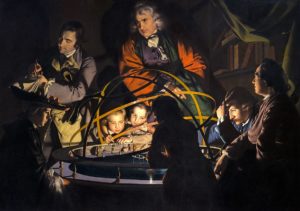 Religious Details
Religious Details
Sacrifices to the gods were basic parts of the ancient religions. We’ve mentioned them before, but from the records left by the Romans we get a very clear picture of how they operated. Historian Will Durant describes them this way:
The ritual of worship aimed merely to offer the gods a gift or sacrifice to win their aid or avoid their wrath. To be effective, said the priests, the ceremony had to be performed with such precision of words and movements as only the clergy could manage. If any mistake was made, the rite had to be repeated, even to thirty times.
The essence of the ceremony was a sacrifice (that literally meant to make something sacred… to belong to the god). In the home the offering would normally be a bit of cake or wine placed in the hearth (the area in front of a fireplace) or dropped into the domestic fire; in the village it would be the first fruits of the crops, or a ram, a dog, or a pig; on great occasions a horse, a hog, a sheep or an ox; on supreme occasions the last three were slaughtered together. Holy formulas pronounced over the victim turned it into the god who was to receive it.
And since only the viscera (organs, intestines, and so on) were burned on the altar, while priests and people ate the rest, the strength and glory of the god (they hoped) passed into his feasting worshipers.
Prayer, to the Romans, was less an appeal and more a magical incantation. It was believed that such a prayer, precisely made, was certain to be granted. And if it wasn’t granted, it was presumed there had to be an error in the ritual.
None of this is to say that the Romans were religiously cold. Votive offerings (like lighting a candle, but including everything from shields to wine to candles) were found all through Rome, and in large numbers. There were small shrines on a huge number of street corners. All together, it seems that Romans felt a great deal of piety and gratitude; that they felt a kinship with the hidden forces of nature and wanted very badly to be in harmony with them. These things, however, did not involve the official, state religion, which was in fact cold… highly legalistic and formulaic.
But again, a very large number of religions were practiced in Rome (and through all of the old world), not just the state religion.
The Roman year was full of religious festivals, and for all sorts of gods. The number changed from time to time, but it was always at least 100 and often much higher.
The Roman view of the afterlife was mainly unchanged from the model that began in Sumer, but the shades (souls of the departed) seem to have become more hostile. Some of the festivals aimed to appease the dead and to turn away their wrath, and one ceremony had the father of a family spit out a mouthful of beans and say, “With these black beans I redeem myself and mine… Shades of my ancestors depart.”
Religion served as a sort of glue to hold the Roman people together. It wove between all aspects of life, public and private. And as we noted above, law maintained the relationships between the people and the gods. For example, before each battle of the Roman army came a carefully performed ceremony. Will Durant notes that, “piety and patriotism became one, and love of country rose to a passion stronger than in any other society known to history.”
* * * * *
Check out our back issues. I promise you they are unique.
